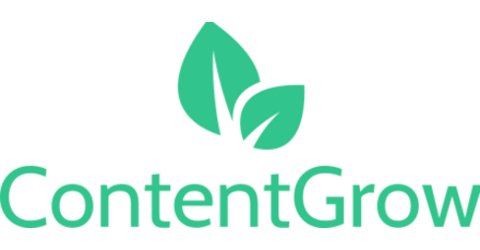Stop choosing sides: A balanced approach to LinkedIn thought leadership
B2B copywriter David Friedman reveals how tension pairs help leaders navigate LinkedIn's polarized landscape between generic AI content and performative authenticity.

With more than 15 years in B2B communication, David Friedman combines strategic thinking with technical understanding. He has created premium inbound content for technical Nordic brands such as Smartoptics, in collaboration with agency Crescando, and IT consultants including Columbus. For security group Gunnebo, he has written internal and executive communications, contributing to intranet, LinkedIn, and employer branding strategies.
David is also CEO and co-founder of Pallisto, an EU-hosted workplace app for structured work. In his dual role as writer and founder, he’s shaping his own LinkedIn thought leadership strategy while developing AI frameworks that structure rather than automate human thinking.
In this interview, David discusses how B2B leaders can navigate LinkedIn's polarized landscape of generic AI content and performative authenticity, his concept of strategic "tension pairs" for balanced content creation, and his use of AI as a philosophical mirror rather than outsourcing thinking or running content on autopilot.
Short on time?
Here’s a table of contents for quick access:
- The false choice between generic AI and performative authenticity
- Quality thought leadership starts with clarity, not volume
- The tension pairs framework for balanced content
- The engagement imperative beyond posting
- A creative sidenote: AI as thinking partner, not autopilot
The false choice between generic AI and performative authenticity
LinkedIn's thought leadership landscape has fractured into two reactive camps, according to David. "On the one hand, we're seeing a wave of generic and noisy content, scaled and amplified by AI. On the other, this is triggering a sort of reactionary response from people who seek to reassert their humanity," he explains.
This polarization forces most professionals into a false choice: embrace AI-powered content scaling or reject digital tools entirely in favor of raw authenticity. Both approaches miss the mark.
The rebellion against AI has gone too far in the opposite direction. “Some people resort to making typos on purpose, embracing randomness as a device and perhaps throwing structure and purpose to the wind in the process. The audience then misses out on something to learn from or reflect on. It risks turning into a performative statement against generic AI content.”
The result is a platform caught between two extremes: algorithmic optimization that produces indistinguishable posts, and performative authenticity that prioritizes reaction over substance. David sees both approaches as fundamentally flawed because they're purely reactive.
“Too often, people write what they think their audience wants to hear, but it’s so generic that anyone could have written it. Or else they write something deeply personal, but without connecting it to their audience. Unless you bring both a unique perspective and lasting value for your audience, your thought leadership content risks sinking into the void of saturated feeds,” he notes.

Quality thought leadership starts with clarity, not volume
Most executives lack the audience clarity that marketers take for granted. "I think usually marketers are good at that," David says, referring to detailed ideal customer profiles. "But individuals building personal brands on LinkedIn, including executives, tend to lack that clarity.”
This gap becomes critical when quality matters more than reach. Recent LinkedIn-Edelman research found that less than half of decision-makers say the overall quality of thought leadership they read is good, with only 15% describing it as very good. This quality gap is exactly what David warns about when executives skip audience definition—they contribute to noise rather than signal by creating content that serves no one well.
Understanding your audience becomes even more crucial in B2B environments where decision-making involves multiple stakeholders and lengthy consideration cycles. Without clear audience definition, even well-intentioned content fails to resonate with the specific concerns and priorities of your target buyers.
David recommends creating detailed audience definitions for AI analysis, but with an important twist: “You need to build audience personas with skeptical traits, like distrust for unverified claims or buzzwords. Otherwise, AI has a tendency to flatter you,” he explains. The goal is creating AI lenses that can evaluate content from your audience's perspective rather than defaulting to generic approval.
This connects to his broader philosophy about AI usage: define your own criteria rather than accepting defaults. "Create your own definition of scoring and categories of what good content looks like for you, so that you can hold it up to your own standards."
The tension pairs framework for balanced content

David's solution centers on what he calls "tension pairs"—complementary forces that, when balanced, create more compelling content than either extreme alone. He identifies four critical pairs for LinkedIn thought leadership:
Emotion and reason form the first tension. “I think of emotion as the spark — it’s what draws people in and gets ideas moving,” David explains. “Reason is what grounds that spark, making the message credible. If you lean too far on emotion, you risk sentiment without substance. But if you lean only on reason, you risk precision without resonance.”
Structure and flow represent the second pair. While structure ensures audiences never lose their place in your argument, flow adds the rhythm that keeps them engaged. "Without clarity, you lose your audience; without flow, you lose their interest."
The third tension exists between surprise and necessity. “Surprise reframes expectations; necessity makes sure every element has a purpose,” he says. “Surprise without necessity comes across as a gimmick, while necessity without surprise ends up monotonous.”
Finally, signature voice and audience connection must be balanced. Your signature perspective makes content distinctive, while audience consideration keeps it relevant. “Without connection, you’re just talking to yourself; without a signature voice, you disappear into the crowd,” he says.
Rather than defaulting to 50-50 splits, David advocates for intentional positioning along these spectrums. “Finding balance is a good first step to increase awareness and avoid drift. But that doesn’t mean forced rigidity. Learn the rules, then break them intentionally — and adapt based on your medium, values, and goals.”
To bring this framework into practice, David is developing an AI-powered quality assurance system that evaluates posts across his tension pair framework. Each pair gets its own AI lens with detailed, personalized definitions rather than generic criteria. “I feed the system a detailed definition of what I mean by signature voice, or what I consider a good balance of structure and emotion,” he explains. The system then scores content across all parameters, with opposing lenses reconciling their perspectives to prevent content from becoming unbalanced.
This systematic approach reflects his broader belief that intentional processes produce better results than intuitive approaches, especially in an era when AI amplifies both clarity and confusion. “If you don’t define your purpose and values clearly. AI will just end up amplifying the lack of clarity."

The engagement imperative beyond posting
But audience clarity and balanced content alone aren't enough. One of the most common mistakes David observes is treating LinkedIn like "a one way distribution platform" instead of an engagement-focused network. LinkedIn success requires consistent engagement beyond posting.
“Even when I’m busy, I make a habit of reacting quickly, sometimes leaving a short comment, and hitting save to return later with a more in-depth response,” David says. “It’s really the golden rule: treat others as you’d like to be treated — comment on their posts the way you’d like people to comment on yours.”
This engagement-first approach aligns with broader B2B social selling best practices where relationship building takes precedence over direct promotion. The most effective thought leaders use LinkedIn as a conversation starter rather than a broadcast channel.
He aims for roughly weekly posting but prioritizes substance over frequency. “I’d rather publish one strong post less often than churn out something forgettable all the time,” he explains.

A creative sidenote: AI as thinking partner, not autopilot
While most professionals view AI as a productivity multiplier, David has developed what he calls "AI rituals" for strategic thinking and personal motivation. His approach involves creating highly specific AI personas based on primary source materials rather than generic training data.
“I’ll upload primary sources and ask AI to analyze them for patterns,” he explains. “Then I layer on my own interpretation and use cases, and build a persona lens that’s more nuanced than the default ones in training data.” This allows him to consult historical figures like 17th-century philosopher Gottfried Wilhelm Leibniz, who pioneered binary logic and championed rigorous systems of thought and scientific inquiry — ideas that eventually influenced modern computing.
David uses these AI personas not for content generation, but for perspective and motivation. He might ask Napoleon to structure his work week like a military campaign, or consult Leibniz to dig into the underlying logic of an idea and systematize it.
“Prompting with metaphors and analogies helps steer AI away from its typical generic tendencies,” he notes. The key difference is intentionality: “You can use AI to reflect ideas back to you in a way that makes your thinking more deliberate — but if you’re not careful, it can end up thinking for you and flattening everything into the generic.”
The bottom line: LinkedIn thought leadership requires balancing multiple tensions simultaneously rather than choosing sides in false debates. As David puts it when evaluating content: “Ask yourself: is this something you’d want to read if someone else wrote it? Could you leave a meaningful comment on it?” he says. “That’s how thought leadership moves beyond only visibility into dialogue, collaboration, and lasting impact.”





